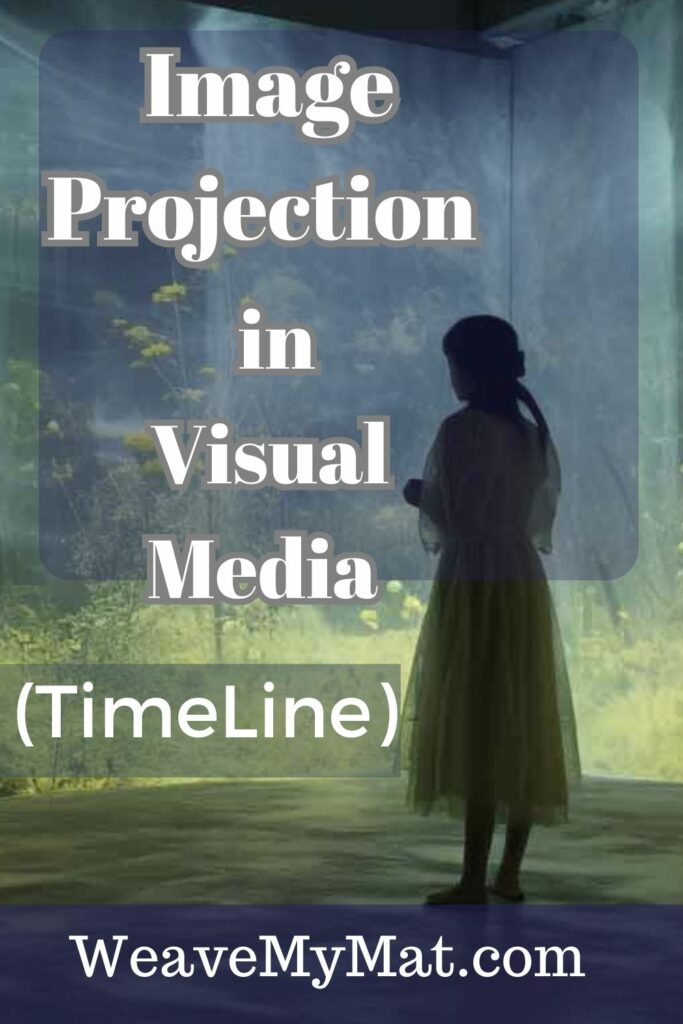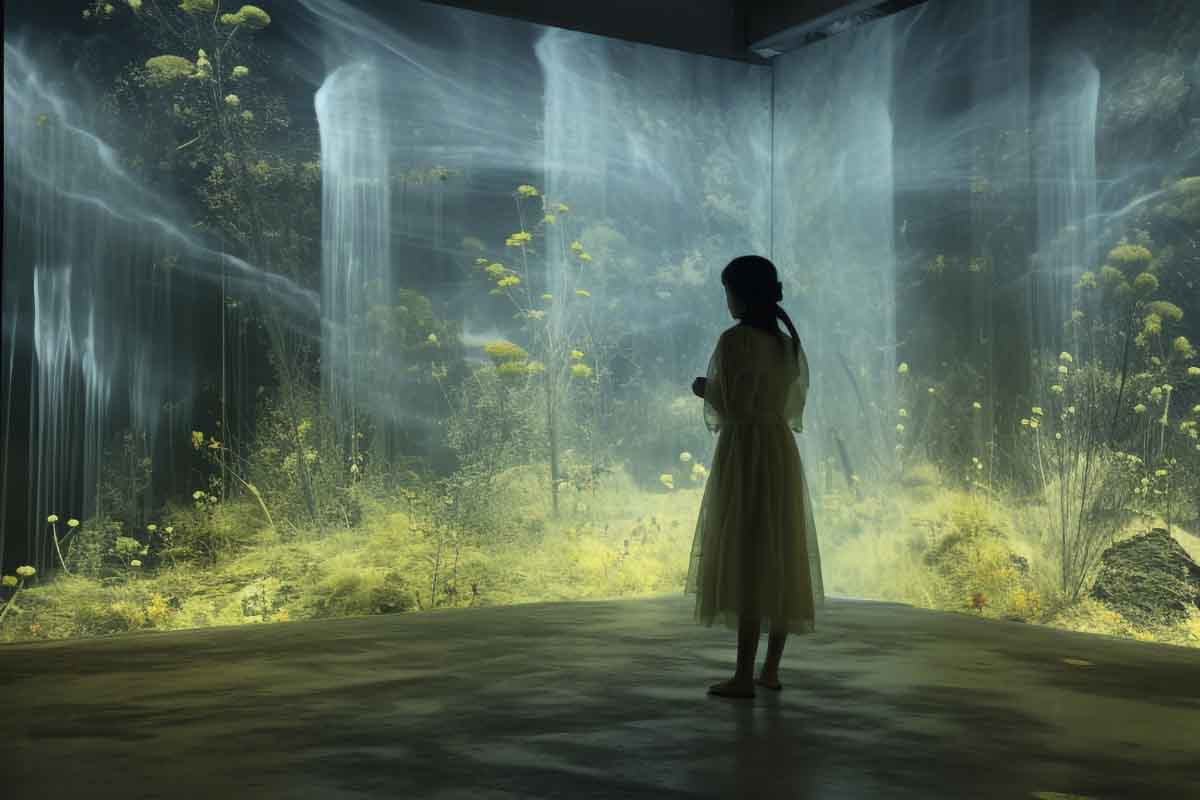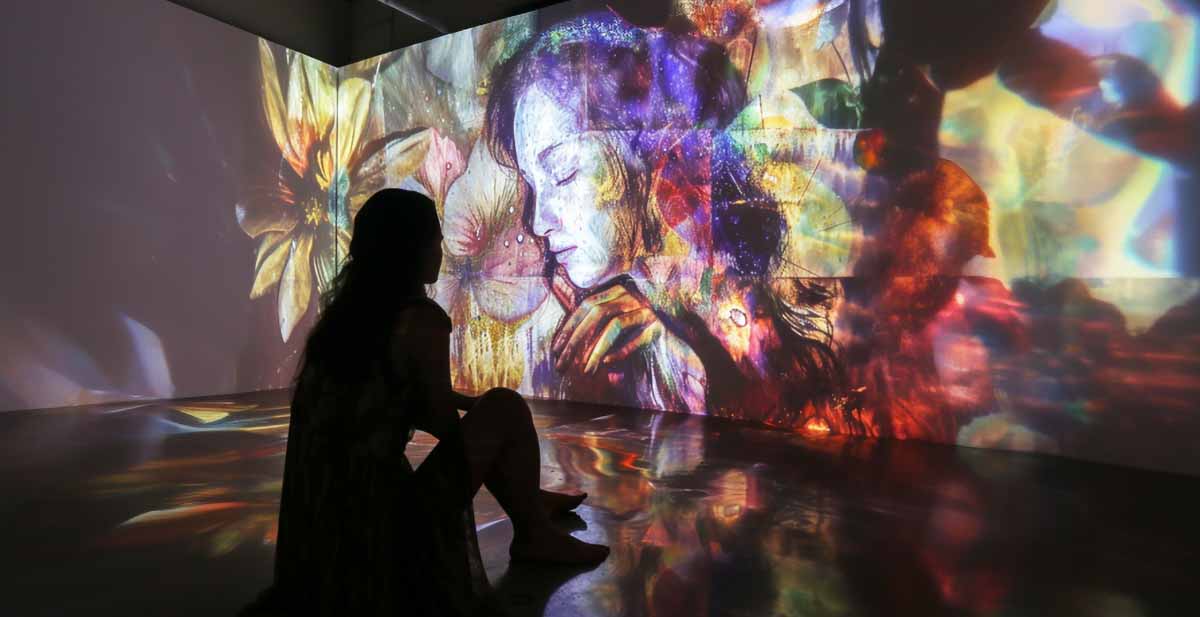The world of projectors, and image projection in visual media has fascinated people for centuries. Long before the age of digital technology, individuals sought ways to bring images to life, project them onto surfaces, and captivate audiences with the magic of light. The history of image projection in visual media is deeply rooted in human curiosity, creativity, and the pursuit of understanding the world around us.
Colin wrote this!
writer/editor at weavemymat.com

An avid technologist, having spent many years working in technical industries, and specializing in all kinds of tech stuff.
Check out more about him here!

Key Takeaways
- The projector industry has witnessed significant milestones and product developments throughout its history.
- Notable products in the projector industry include the Magic Lantern, slide projectors, film projectors, overhead projectors, home theater projectors, digital projectors (DLP and LCD), high-definition projectors, laser projectors, and portable/mini projectors.
- Milestones in the industry include the transition from film to digital projection, the introduction of high-definition and ultra-high-definition (4K and 8K) projectors, and advancements in projection technologies like DLP and LCD.
- Projectors have played a crucial role in various fields, including entertainment, education, business presentations, and home theater setups.
- The development of digital projectors revolutionized the movie industry, allowing for the distribution of films in digital formats and providing sharper and more vibrant visuals.
- Laser projectors have gained popularity due to their improved brightness, color accuracy, and longer lifespan compared to traditional lamp-based projectors.
- Portable and mini projectors have become increasingly popular for their compact size and convenience, allowing users to project content from smartphones, laptops, and other devices onto walls or screens.
From the early days of the camera obscura and the magic lantern to modern-day virtual reality, humans have continuously developed new ways to “see” and interact with visual media. This journey through time showcases the innovative spirit and profound impact image projection has had on society, education, and entertainment.
Over the years, the technology behind image projection and visual media has evolved dramatically. The magic lantern, a portable optical device and descendent of the camera obscura, projected images on walls or screens roughly 300 years before the first movie projector (Artsy). The invention of the dioptric lens in the 17th century made it possible for two-dimensional transparencies to be illuminated and focused to project images onto screens(SpringerLink). The evolution of light sources, such as the introduction of the Argand lamp in the late 18th century, further improved the quality and brightness of projected images(berndscholze.com).

Ancient Image Projection Methods
Before the advent of modern technology, ancient civilizations used various methods to project images, experimenting with light and shadow to entertain and educate.
Camera Obscura
The camera obscura is an early imaging device that dates back thousands of years. This technique involves projecting an image through a small hole or aperture in a darkened space, resulting in an inverted image on an opposite surface. The phenomenon was first documented by Chinese philosopher Mozi around 400 BCE, and Aristotle later described the principles further.
In 1826, Joseph Nicéphore Niépce took the first permanent photograph using a camera obscura and a pewter plate coated with bitumen. This milestone event paved the way for the modern photographic processes and the eventual development of digital cameras.
Shadow Play
Shadow play, or shadow puppetry, is an ancient form of storytelling using light and shadows to create images on a screen or wall. This form of image projection can be traced back to the time humans discovered fire, when they would entertain and terrify each other with shadows cast on cave walls. The formal art of shadow play later developed in Southeast Asia, China, India, and the Middle East, becoming an essential cultural element in these regions.
The rudimentary image projection techniques employed in shadow play influenced the development of the magic lantern, a precursor to the modern projector which came into prominence during the 17th and 18th centuries.
Throughout history, these ancient image projection methods provided the foundation for the development of advanced technologies in visual media, such as photography and film. As technology continues to progress, modern society can trace its roots back to the creative innovations of these ancient civilizations.
Pre-Cinema Projection Devices
Magic Lantern
The Magic Lantern is an optical projection device that predates the development of the motion picture projector by several hundred years. It entertained audiences with images projected from painted glass slides, shown in progression to tell a story. The invention of the Magic Lantern can be traced back to the 17th century. It played a significant role in the history of image projection, influencing the creation of other visual media technologies.
Phantasmagoria
Phantasmagoria was an audio-visual show popular throughout the 19th century in Europe. It used a modified magic lantern to project frightening images such as skeletons, demons, and ghosts onto walls, smoke, or semi-transparent screens, frequently using rear projection. The ability to manipulate the size and focus of images, combined with special effects such as sounds and live performers, made these shows visually engaging and immersive, setting the stage for the evolution of visual media.
Zoetrope
The Zoetrope, a pre-cinema optical toy, played an essential role in the early history of animation. Invented in the early 19th century, it consists of a cylindrical drum with regularly spaced vertical slits on its side. Inside the drum, a series of still images are placed in sequence, depicting successive stages of motion. When the drum is spun, viewers can look through the slits to see a rapid succession of images, creating the illusion of continuous motion. The Zoetrope demonstrated how the human eye perceives motion, influencing the later development of motion picture technology.
- 1826: Joseph Nicéphore Niépce takes the first permanent photograph using a camera obscura and a pewter plate coated with bitumen.
- 1839: Louis Daguerre develops the daguerreotype, a photographic process that produces a positive image on a silver-coated copper plate.
- 1888: George Eastman introduces the Kodak camera, which uses roll film and is marketed as “you press the button, we do the rest.”
- 1895: The Lumière brothers hold the first public screening of a motion picture, which they called “cinematography.”
- 1927: The first “talkie,” The Jazz Singer, is released, marking the beginning of the end of the silent film era.
- 1932: Technicolor introduces a three-strip process that produces full-color images on film.
- 1952: The first videotape recorder is invented by Charles Ginsburg and his team at Ampex.
- 1953: The first 3D movie, Bwana Devil, is released.
- 1965: The first home video recorder, the Sony CV-2000, is introduced.
- 1975: Kodak engineer Steven Sasson invents the first digital camera, which uses a CCD sensor to capture images.
- 1982: Sony introduces the first consumer camcorder, the Betamovie.
- 1995: Pixar releases Toy Story, the first feature-length computer-animated film.
- 1997: The first home theater projectors are introduced, allowing people to recreate the cinema experience in their own homes.
- 2002: The first consumer high-definition television sets are introduced.
- 2007: The first iPhone is released, which includes a built-in camera and video recording capabilities.
- 2010: The first 4K resolution television sets are introduced.
- 2016: The first virtual reality headsets, such as the Oculus Rift and HTC Vive, become commercially available.
- 2021: The concept of the Metaverse is popularized, a virtual universe where users can interact with each other and digital objects in real-time.
Birth of the Motion Picture
The history of image projection and visual media has seen numerous milestones that have culminated in the modern visual experiences we enjoy today. This section will focus on the birth of the motion picture, highlighting key innovations from pioneers such as the Lumière Brothers and Thomas Edison. The invention of motion pictures was a truly transformative step that revolutionized the world of visual media.
Lumière Brothers
In 1895, Auguste and Louis Lumière introduced the Cinématographe, a projector that could show 16 frames per second. This significant invention paved the way for early movies, captivating audiences with simple moving images. The Lumière brothers held the first public screening of a motion picture, a series of short films that showcased everyday scenes and demonstrated the magical potential of the new medium.
Thomas Edison
Thomas Edison, a renowned inventor, also played a vital role in the development of motion pictures. Edison met with Eadweard Muybridge, who had created the groundbreaking image sequence “Sallie Gardner at a Gallop” (also known as “The Horse in Motion”). Inspired by Muybridge’s work, Edison conducted his own experiments with motion pictures.
One of Edison’s most significant contributions was the invention of the Kinetoscope, a forerunner to the movie projector. The Kinetoscope allowed individual viewers to watch short films through a peephole in the device. While the Kinetoscope did not allow for public screenings like the Lumière Brothers’ Cinématographe, it still played an essential role in the advancement of visual media.
In summary, the birth of the motion picture was marked by groundbreaking innovations from pioneers like the Lumière Brothers and Thomas Edison. Their contributions laid the foundation for the development of the modern film industry and heralded the start of a new era in visual media.
The Rise of Hollywood
The Golden Age of Cinema
In 1895, the Lumière brothers held the first public screening of a motion picture, ushering in the era of cinematography. This ground-breaking event set the stage for the rise of Hollywood and its subsequent influence on global entertainment. The 1927 release of The Jazz Singer, the first “talkie,” marked the beginning of the end of the silent film era and a new era of innovation in filmmaking. Hollywood’s Golden Age was characterized by the rise of major film studios, iconic stars, and unforgettable stories captivating audiences worldwide.
Technological Developments
Throughout the history of image projection and visual media, numerous technological advancements have revolutionized the industry. These include camera obscuras in 1826, the 1839 daguerreotype, and George Eastman’s 1888 introduction of the Kodak camera. The realm of color film was transformed in 1932 when Technicolor introduced a three-strip process, allowing for the production of vibrant, full-color images on film.
In 1952, the first videotape recorder was invented by Charles Ginsburg and his team at Ampex, followed by the release of the first 3D movie, Bwana Devil, in 1953. Home video recording became accessible with the 1965 introduction of the Sony CV-2000, and the digital era saw rapid advancements with the invention of the first digital camera by Kodak engineer Steven Sasson in 1975.
Home theater projectors
As technology continued to evolve, advancements like the 1997 introduction of home theater projectors, the first consumer high-definition television sets in 2002, and the integration of cameras and video recording capabilities into the 2007 iPhone, dramatically altered the landscape of image projection and visual media. The 2010 debut of 4K resolution television sets and the 2016 commercial availability of the first virtual reality headsets, such as the Oculus Rift and HTC Vive, further pushed the boundaries of what was possible in visual entertainment.
Today, the world of image projection and visual media continues to evolve at a rapid pace with developments like 8K home theater projectors and the popularization of the Metaverse—a virtual universe where users can interact with each other and digital objects in real-time. This ever-evolving technological landscape is a testament to the enduring magic of light and its powerful influence on human artistic expression and storytelling.
Television and Visual Media
Television has revolutionized the way we experience visual media and has played a significant role in the evolution of image projection technologies. Over the years, television technologies have advanced, providing users with more immersive and high-quality experiences.
First Broadcasts
Television history dates back to the early 20th century, with the first electronic television system developed by Philo Farnsworth in 1927. However, the first public television broadcasts didn’t take place until the late 1930s. During this time, television was primarily focused on delivering moving images and sound from a source to a receiver. This marked the beginning of an era where visual media could reach audiences beyond physical distances.
Color Television
Color television was a significant milestone in the development of television technology. In 1953, the National Television System Committee (NTSC) in the United States introduced the first color TV system, which used electronic color encoding to transmit color signals. This led to color television becoming mainstream in the 1960s and quickly replacing black and white TVs in households around the world.
Following the first broadcast and color television, there have been numerous advancements in television technologies. Some of the most notable include:
- 1962: Introduction of satellite television, allowing for international broadcasts and global reach.
- 1972: The development of cable television, providing viewers with a greater selection of channels and content.
- 1980s: The emergence of digital television, offering better picture and sound quality.
- 2002: The first consumer high-definition television sets are introduced, providing viewers with more detailed and higher-resolution images.
- 2010: The introduction of 4K resolution television sets, offering even more detailed and lifelike images.
- 2023: The first 8K home theater projectors are released, providing even higher resolution and more immersive cinematic experiences in the home.
These advancements have significantly impacted the way we consume and engage with visual media today, with modern television technology providing consumers with more immersive and dynamic experiences than ever before.
Projection in Visual Media – Digital Revolution and Beyond
The advancements in image projection and visual media have been astounding since the inception of photography and cinema. This section will delve into the Digital Revolution and its impacts on various aspects of visual media.
Digital Cinema
As digital technology progressed, so did its influence on the film industry. In 1975, Kodak engineer Steven Sasson invented the first digital camera, utilizing a CCD sensor to capture images (source). Computer-generated imagery transformed the realm of cinema, with Pixar’s Toy Story (1995) becoming the first feature-length computer-animated film (source). By 2002, high-definition television sets appeared in consumer markets, further enhancing the viewing experience (source).
Subsequent breakthroughs include the introduction of 4K resolution television sets in 2010 and the first 8K home theater projectors in 2023. These advances increased the resolution of projected images, providing a more immersive cinematic experience in home theaters (source).
Internet and Streaming Services
With the proliferation of the internet in the mid-1990s, a new sector of global economy emerged, requiring businesses to establish websites and engage in e-commerce (source). The internet also paved the way for streaming services, allowing users to access video content on-demand. From the first iPhone in 2007 offering built-in camera and video recording capabilities, to modern smartphones enabling easy streaming, the way we consume visual media has significantly evolved.
Virtual Reality
Virtual reality (VR) marks another ground-breaking development in visual media. In 2016, the first VR headsets such as the Oculus Rift and HTC Vive were introduced to the consumer market (source).
VR technology encompasses a wide array of applications, from entertainment to education, and has opened new realms for interactive experiences. The concept of the Metaverse gained popularity in 2021, as a virtual universe where users can interact with one another and digital objects in real-time (source).
In summary, from the first permanent photograph in 1826, to modern digital projection and virtual reality, the development of visual media and image projection has been a constant source of wonder and discovery.
Projection in Visual Media FAQs
What is a projector?
A projector is a device that projects visual content, such as images, videos, or presentations, onto a larger screen or surface. It uses a light source, optics, and various projection technologies to display the content in a magnified form.
How do projectors work?
Projectors work by taking an input signal, such as video or data, and processing it to generate a high-intensity light beam. This beam passes through optical components, including lenses and mirrors, which project the image onto a screen or surface. The image is created through the rapid display of pixels or dots of light.
What are the key factors to consider when choosing a projector?
When choosing a projector, important factors to consider include resolution (image clarity), brightness (measured in lumens), contrast ratio (difference between dark and bright areas), connectivity options, throw distance (distance between projector and screen), and the intended use (business, home theater, education, etc.).
What are the different types of projectors available?
There are several types of projectors available, including home theater projectors, business projectors, portable projectors, and ultra-short-throw projectors. Additionally, projectors can be categorized based on the projection technology they use, such as DLP (Digital Light Processing) or LCD (Liquid Crystal Display).
Can projectors be used outdoors?
Yes, projectors can be used outdoors, although certain considerations should be made. Outdoor projectors typically require higher brightness levels to compensate for ambient light, and screens or surfaces should be chosen carefully to ensure optimal image quality. Outdoor projection setups often involve events, movie screenings, or temporary installations.
What are the main milestones in projection technology?
- Magic Lantern (17th century): The Magic Lantern is an optical projection device that predates the development of the motion picture projector by several hundred years. It projected images from painted glass slides, telling stories through a progression of images.
- Slide Projector (late 19th century): The slide projector, also known as a lantern slide projector, became popular in the late 19th century. It used glass slides with photographic images to project pictures onto a screen or wall.
- Film Projector (late 19th century): The film projector revolutionized the motion picture industry. It allowed films to be projected onto a screen, enabling large-scale cinematic experiences. Notable film projectors include the Lumière Brothers’ Cinématographe and Thomas Edison’s Kinetoscope.
- Overhead Projector (mid-20th century): The overhead projector, commonly used in educational and business settings, allowed presenters to project images or text onto a screen or wall using transparent sheets placed on a lighted stage.
- Home Theater Projectors (late 20th century): The introduction of home theater projectors brought the cinematic experience into people’s homes. These projectors allowed users to recreate the movie theater ambiance by projecting movies onto large screens or walls.
- Digital Projectors (late 20th century): The transition from film to digital projection revolutionized the movie industry. Digital projectors use digital files to project high-resolution images onto screens, providing sharper and more vibrant visuals. This technology also enabled the distribution of movies in digital formats.
- DLP and LCD Projectors (late 20th century): Digital Light Processing (DLP) and Liquid Crystal Display (LCD) projectors are two popular types of digital projectors. DLP projectors use micro mirrors to reflect light, while LCD projectors use liquid crystal displays to create images. Both technologies have played a significant role in the advancement of projection systems.
- High-Definition Projectors (21st century): The introduction of high-definition (HD) projectors enhanced the visual quality of projected images. HD projectors offer greater resolution, sharpness, and color accuracy, providing a more immersive viewing experience.
- Laser Projectors (21st century): Laser projectors utilize laser light sources instead of traditional lamps. They offer benefits such as improved brightness, color accuracy, and longer lifespan compared to traditional lamp-based projectors.
- 4K and 8K Projectors (21st century): 4K and 8K projectors provide ultra-high-definition resolution, with four times and eight times the pixel count of standard high-definition, respectively. These projectors offer incredibly detailed and lifelike images, delivering an immersive visual experience.
- Portable and Mini Projectors: Portable and mini projectors have become popular for their compact size and convenience. These projectors allow users to project images or videos from smartphones, laptops, or other devices onto walls or screens.

